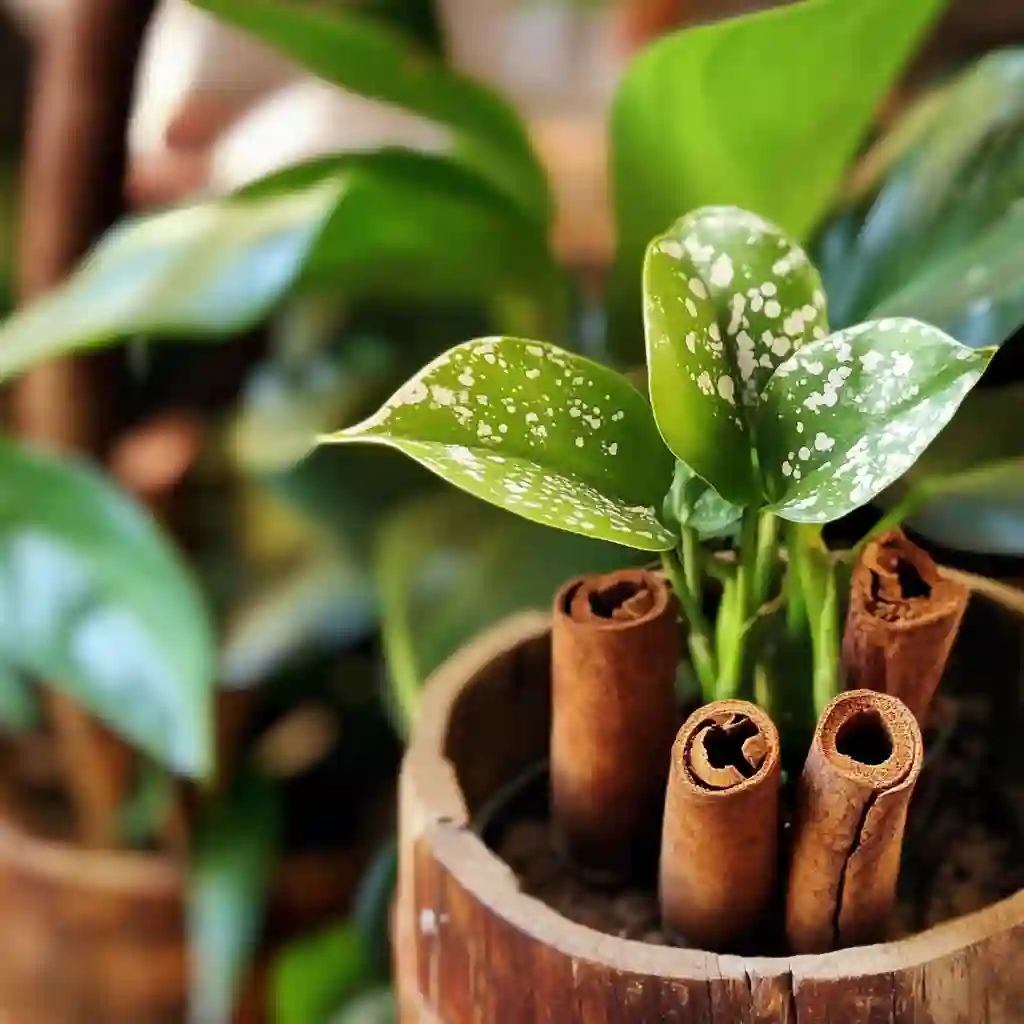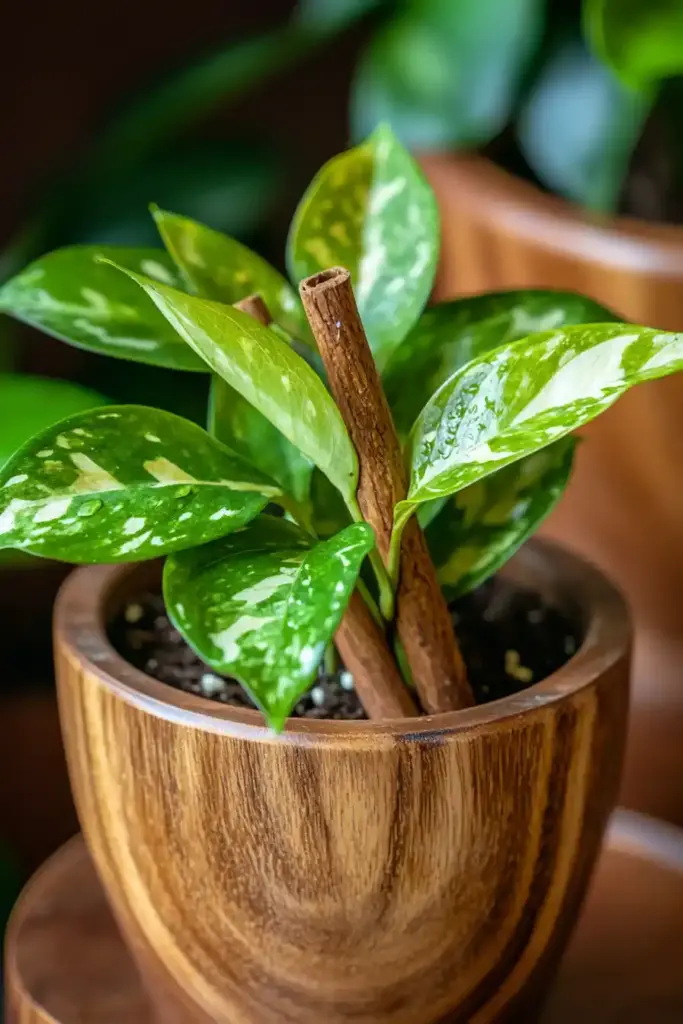Cinnamon isn’t just a staple in your kitchen spice rack — it’s a secret weapon for your garden too. Whether you’re tending to indoor houseplants or managing a lush outdoor garden, this everyday ingredient can deliver powerful benefits. Using cinnamon on your plants can naturally boost growth, deter pests, and prevent common plant problems — all without harsh chemicals.
In fact, once you understand how effective cinnamon is in the garden, you’ll never look at your spice drawer the same way again. From protecting delicate seedlings to banishing mold and ants, cinnamon might just become your go-to gardening hack.
Quick Facts & Botanical Insights
Before we dive into the specific ways cinnamon can work magic in your garden, let’s take a quick look at what makes it so effective from a botanical standpoint.
What Exactly Is Cinnamon?
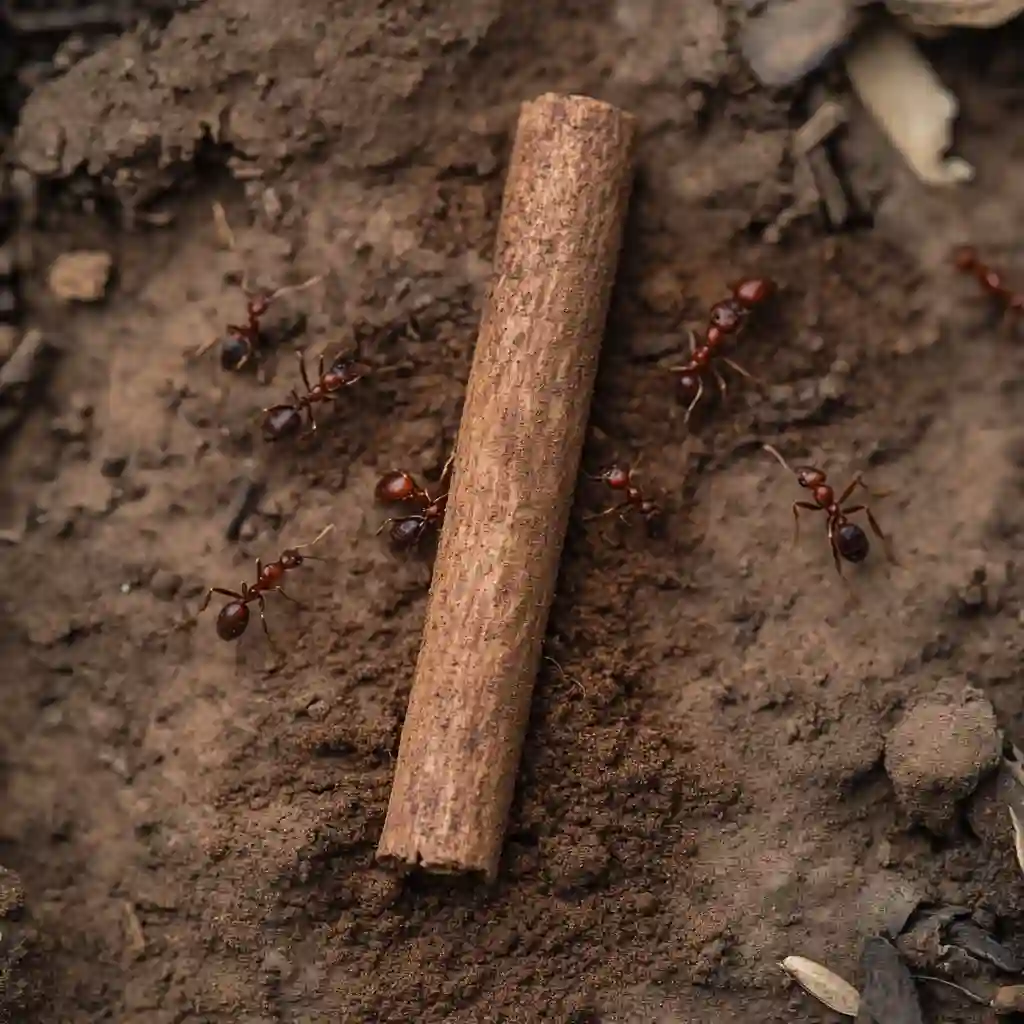
Cinnamon is derived from the inner bark of trees in the Cinnamomum genus, particularly Cinnamomum verum (true cinnamon) and Cinnamomum cassia (commonly found in most grocery stores). It’s been prized for centuries in both medicine and cooking — but it turns out, plants love it too.
Why Does It Work So Well for Plants?
Cinnamon contains several powerful compounds, especially cinnamaldehyde, which has:
- Antifungal properties — fights harmful soil fungi and mold.
- Antibacterial effects — helps disinfect plant wounds.
- Natural pest-repelling qualities — deters ants, gnats, and even some fungal-breeding insects.
These properties make it an all-in-one solution for gardeners looking to maintain a healthy growing environment — naturally and affordably.
Organic Gardening Bonus:
Cinnamon is biodegradable, safe for pollinators like bees and butterflies, and perfectly aligned with organic and sustainable gardening practices.
It’s not just a spice — it’s plant therapy in powder form.
Cinnamon for Seedlings – Nature’s First Aid
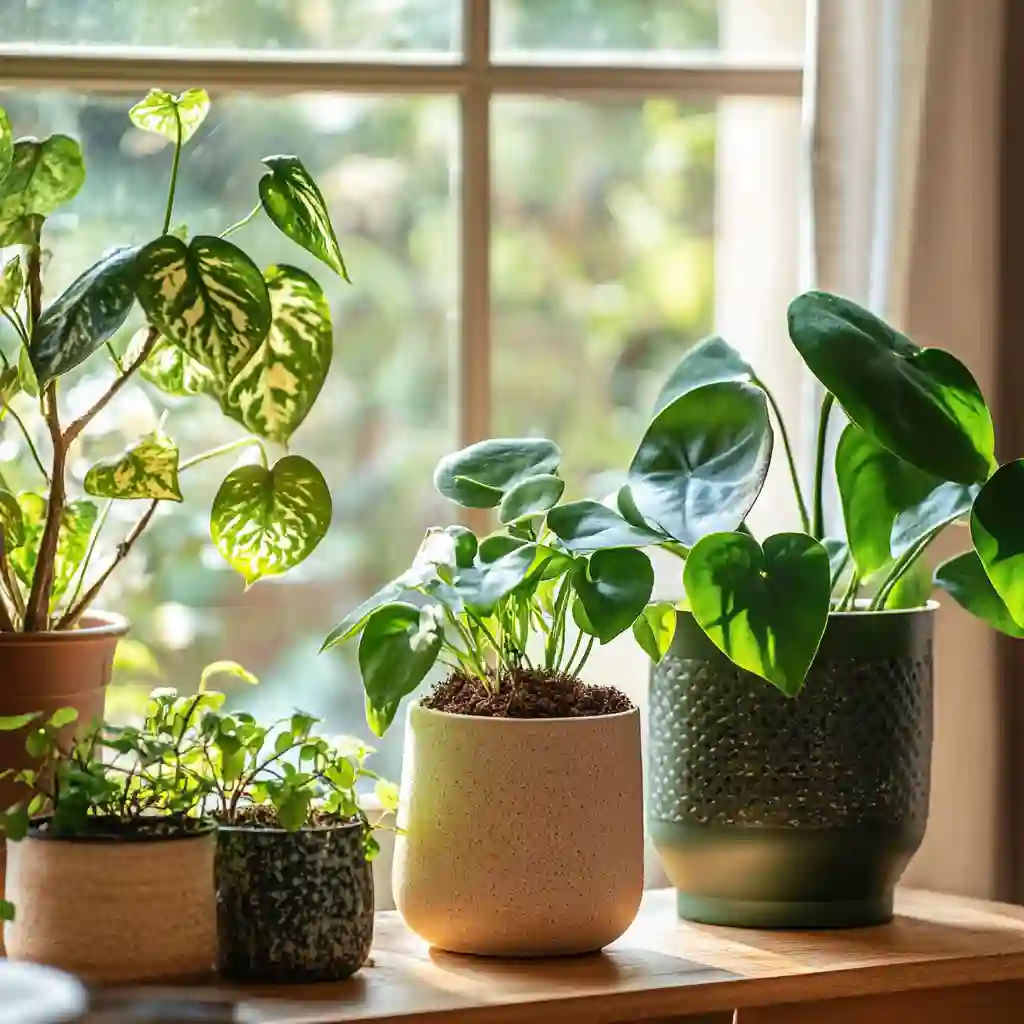
New seedlings are incredibly vulnerable — just like baby turtles scrambling to the ocean, they face a host of invisible threats the moment they emerge. One of the biggest killers? A common garden issue known as damping-off disease.
What Is Damping-Off?
Damping-off isn’t a single disease, but rather a group of soil-borne fungal infections that cause seedlings to:
- Rot at the base
- Collapse and die shortly after germination
- Suffer from stunted growth
It’s frustrating for gardeners and heartbreaking after all the care you put into starting seeds.
How Cinnamon Helps:
Cinnamon acts as a natural antifungal agent, making it a powerful and chemical-free solution for preventing damping-off. Just a light dusting of cinnamon over the soil after planting seeds can:
- Kill off harmful fungi before they attack
- Create a hostile environment for mold and mildew
- Promote healthier, stronger seedlings from day one
This simple step is like giving your seeds a protective bubble — allowing them to push through the soil and thrive without early setbacks.
Tip: Use a fine mesh strainer or a spice shaker to sprinkle cinnamon evenly without overdoing it.
Mushroom Control – No More Surprise Fungi!
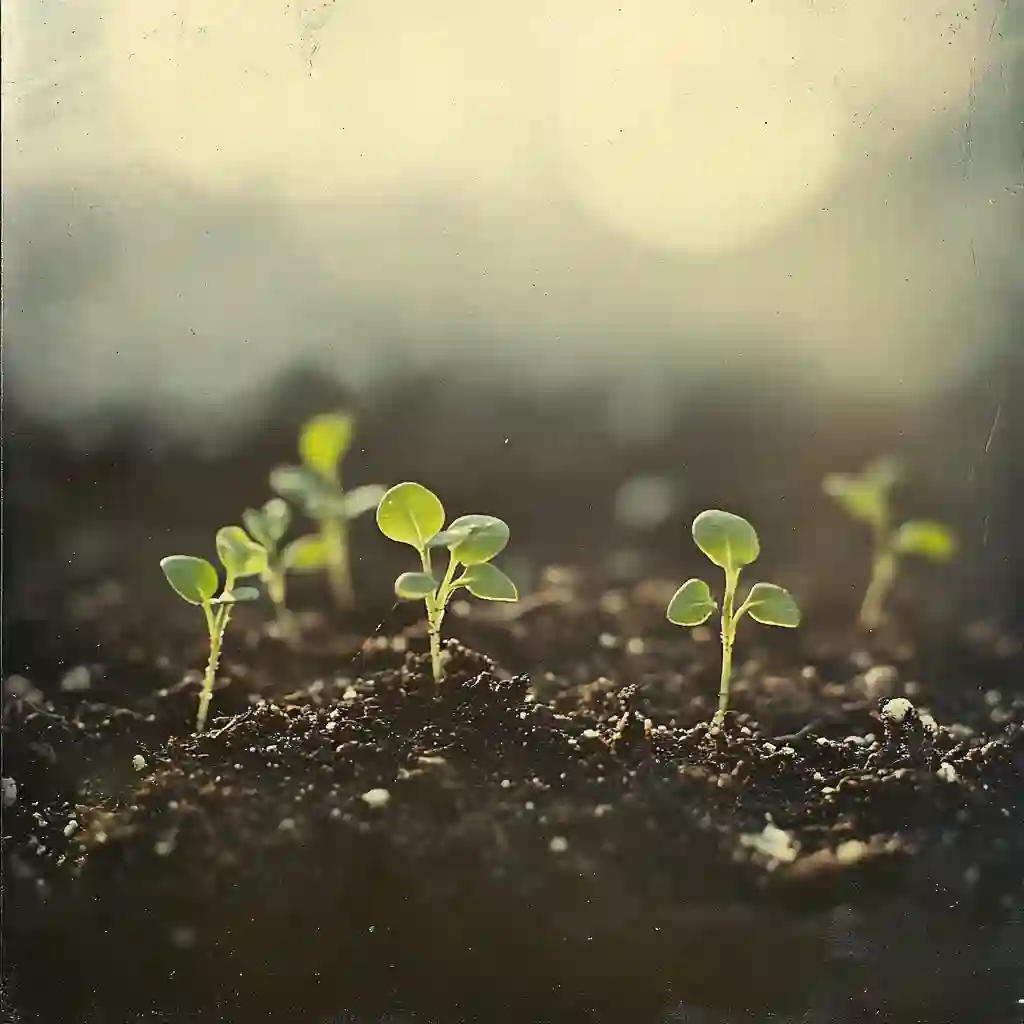
You step outside to admire your garden and — surprise! — a patch of wild mushrooms has popped up overnight. While they might seem harmless or even whimsical, mushrooms can signal excess moisture or fungal-rich soil, which isn’t always ideal for your plants.
Why Do Mushrooms Appear?
Mushrooms thrive in damp, organic-rich environments. While some varieties are benign, others compete for nutrients or indicate that conditions could lead to root rot or mold growth in nearby plants.
How Cinnamon Saves the Day:
Cinnamon’s potent antifungal properties don’t just work on microscopic fungi — they also deter visible fungal growth like mushrooms. A light sprinkle of cinnamon directly on unwanted mushrooms and the surrounding soil can:
- Inhibit fungal spores from spreading
- Discourage regrowth without damaging your plants
- Help dry out overly moist soil areas naturally
It’s a clean, non-toxic solution that doesn’t require pulling or digging — and it smells a lot better than commercial fungicides.
Pro Tip: For ongoing mushroom prevention, combine cinnamon with proper drainage and regular soil aeration.
Cinnamon as a Natural Rooting Hormone
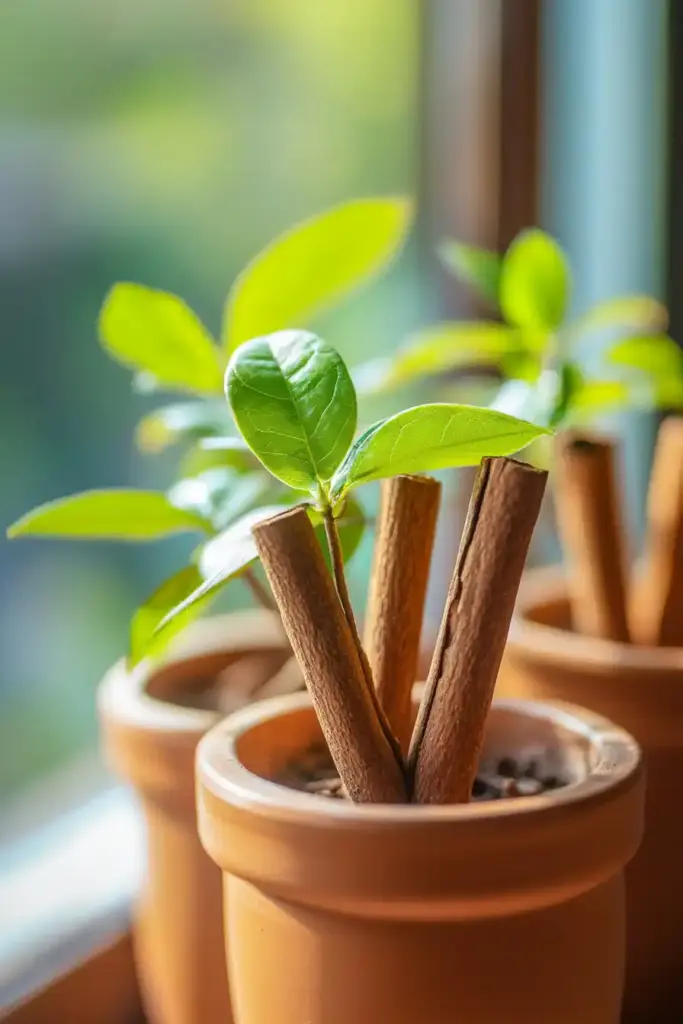
Thinking about propagating plants from cuttings? Whether it’s a pothos vine or a piece of rosemary, getting those roots to grow is the key to success. Most gardeners reach for synthetic rooting hormone powders — but did you know cinnamon works just as well, naturally?
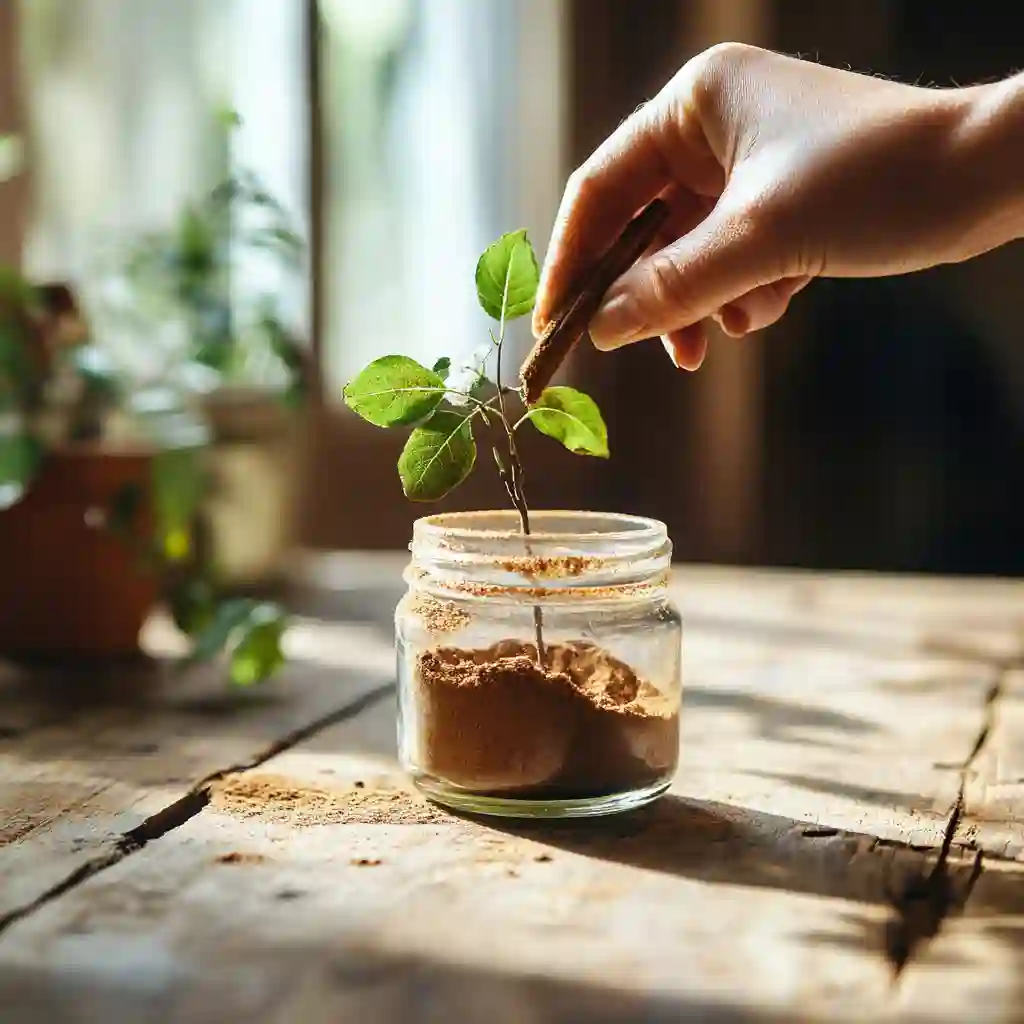
How Cinnamon Stimulates Root Growth:
Cinnamon doesn’t contain auxins (the hormones in commercial rooting powder), but it encourages root development by:
- Protecting the cutting from fungal infections and stem rot
- Creating a clean, sterile environment that allows roots to form safely
- Supporting the plant’s natural rooting process without chemical additives
How to Use It:
- Dip the cut end of your plant cutting into clean water.
- Roll or dip the wet stem into ground cinnamon until coated.
- Plant in your chosen growing medium (soil, water, or perlite).
It’s that easy — and cost-effective. One jar of cinnamon can last you through dozens of propagation projects!
Bonus: It’s safe for edible herbs, so no worries about chemical residues on future harvests.
Cinnamon as an Ant Deterrent – No More Tiny Invaders!
Let’s face it — ants are persistent. Once they find a trail into your garden or home, they bring the whole crew with them. While chemical ant killers may work, they often pose risks to pets, kids, and beneficial insects. Cinnamon offers a safe, natural alternative that ants seriously hate.

Why Ants Avoid Cinnamon:
Cinnamon interferes with ants’ scent trails — the invisible chemical paths they follow to food sources and nesting areas. When you sprinkle cinnamon:
- It blocks communication between ants
- Kills ants on contact in some cases (due to its strong compounds)
- Prevents new colonies from forming in that area
How to Use It:
- Around garden beds: Sprinkle a line of cinnamon where ants are entering.
- Indoor use: Apply cinnamon near window sills, doors, cracks, or anywhere ants sneak in.
- On potted plants: If ants are nesting in the soil, dust cinnamon on top and around the base.
Not only does it repel ants, but it also smells warm and inviting — way better than that harsh chemical stuff!
Note: For full infestations, combine cinnamon use with barrier methods and clean-up of attractants (like sweet spills or mulch build-up).
Healing Plant Wounds – Cinnamon to the Rescue
Accidents happen — maybe a branch snapped while pruning, or you bumped a stem while moving a pot. Just like humans, plants can get “injured,” and when they do, they’re vulnerable to infections. That’s where cinnamon steps in as a natural antiseptic and healing agent.
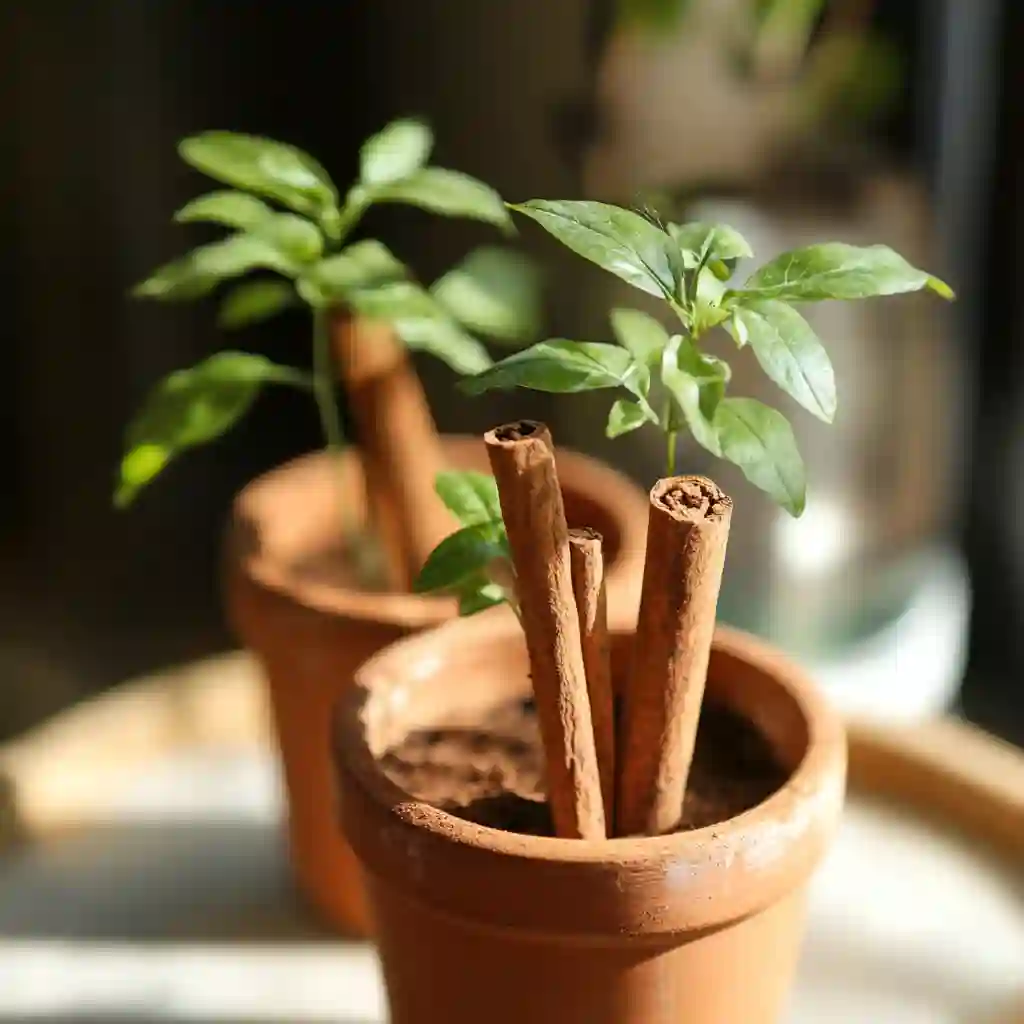
Why Wounded Plants Need Care:
Open cuts on stems or branches can:
- Invite bacteria, fungi, and pests
- Slow the plant’s recovery
- Lead to rot or decay if left untreated
How Cinnamon Helps:
Cinnamon acts as a plant-friendly disinfectant, helping to seal the wound and prevent pathogens from taking hold. It also promotes faster healing by drying out the affected area slightly — encouraging callus tissue to form (kind of like a scab on skin).
How to Apply:
- Gently clean the wounded area if it’s muddy or damp.
- Let the area dry briefly.
- Sprinkle cinnamon directly onto the cut or broken stem.
- No need to wipe or water it in — just leave it be.
Great For: Pruning cuts, snapped leaves, or root wounds during transplanting.
Using cinnamon after pruning is a thoughtful step that shows your plants a little love — and helps them bounce back stronger.
Indoor Plant Power – Cinnamon’s Role in Houseplant Care
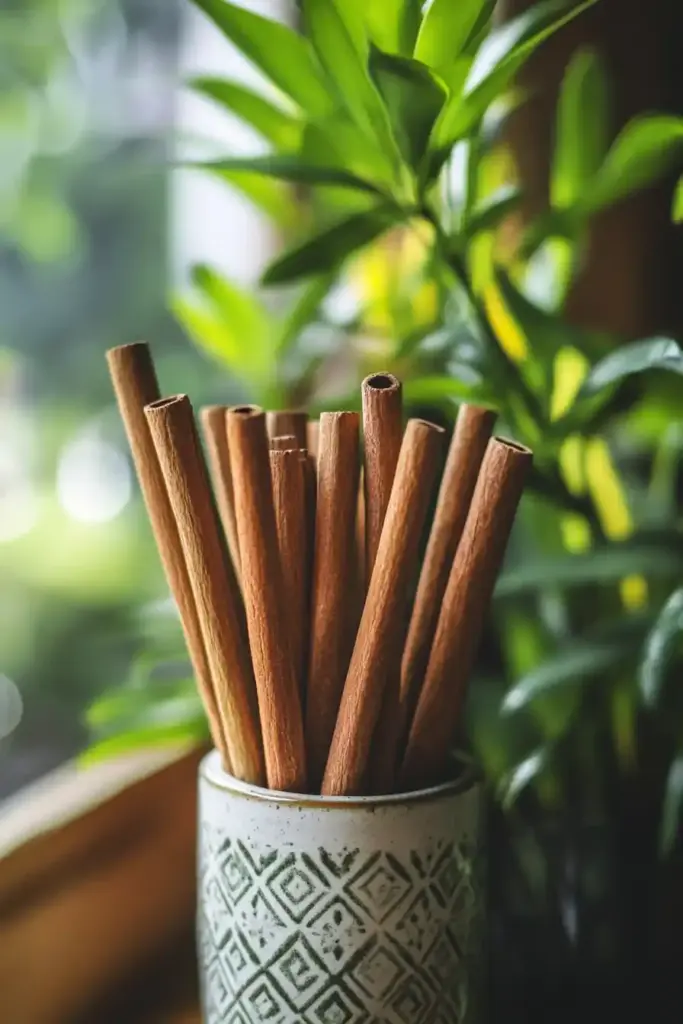
Indoor plants bring life to your space, but they’re not immune to problems. Gnats buzzing around your peace lily? Mold creeping over your potting soil? Cinnamon might be the one-ingredient solution you’ve been overlooking.
Common Houseplant Problems Cinnamon Can Fix:
- Fungus gnats: These tiny flying pests lay eggs in moist soil. Their larvae feed on organic matter and roots.
- Mold & mildew: White, fuzzy growth on soil is often a sign of poor air circulation or overwatering.
- Sour soil smell: That musty scent from your pots can indicate microbial imbalance.
How Cinnamon Works Indoors:
- Antifungal action: It halts mold spores and mildew before they spread.
- Gnat deterrent: It kills gnat larvae and discourages adults from laying eggs in the soil.
- Odor control: Its natural scent freshens the soil and subtly perfumes your space.
How to Use It Indoors:
- Dust the top layer of soil with cinnamon after watering.
- Reapply every few weeks or after heavy watering sessions.
- For larger pots, stir gently into the top inch of soil.
Bonus Tip: Use cinnamon on cuttings or repotted plants to prevent transplant shock and infection.
Whether you’re a beginner with a few leafy friends or a certified houseplant collector, adding cinnamon to your routine is a low-effort, high-reward move.
Conclusion
Who knew that something as simple as cinnamon could do so much for your plants? From protecting delicate seedlings and healing plant wounds to repelling pests and preventing mold, cinnamon proves it’s not just for baking — it’s a gardener’s best-kept secret.
Whether you’re growing herbs on a windowsill or tending to a backyard jungle, cinnamon offers a natural, affordable, and chemical-free way to care for your plants. It’s a small step that leads to stronger, healthier growth — and a more sustainable gardening routine.
So the next time you’re in the spice aisle, grab an extra jar — your plants will thank you!

